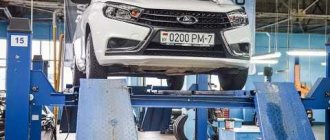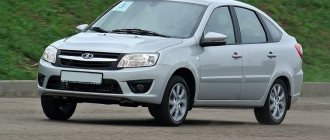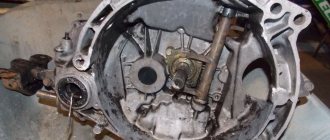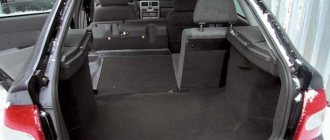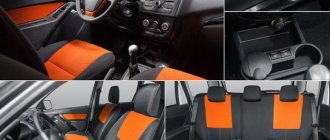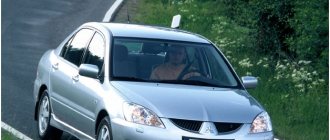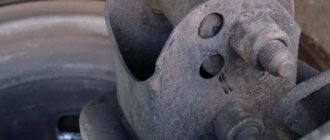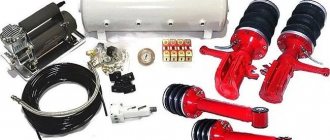Lancer X is a dynamic and aggressive, comfortable and attractive car that especially appealed to our youth. The car was offered in several body styles - a sedan, a rare coupe, a station wagon and a hatchback. The article will review the Mitsubishi Lancer 10: technical characteristics, vehicle features and other important details.
Ground clearance Mitsubishi Lancer 10
They can touch any hillock. Regular cars have clearance from 13 to 22 cm, SUVs from 22 to 26 cm, SUVs from 26 cm and above.
To avoid damage to the bumper, you can dismantle its protection, thereby making it more vulnerable. The ride height adjustment system increases the ground clearance. By reducing the speed to a minimum and turning on the ride height change button, the car continues to move without damage. Especially in countries where it is easier to call roads directions, since they, in fact, exist only on paper.
Ground clearance of Mitsubishi Lancer sportback
So the importance of ground clearance cannot be underestimated, and when choosing a car you should definitely take this factor into account as one of the mitsubishi lancer x ground clearance.
Ground clearance or, more simply and in short, ground clearance is the distance measured from the lowest point of the central part of the car to the supporting surface. As a rule, clearance is indicated in millimeters.
Often two values are indicated at once: Some cars allow you to change the ground clearance while driving. You just need to take into account that with a high center, controllability decreases, so when driving fast, it is wiser to reduce the ground clearance.
Clearance dimensions of Lancer 10. The highest clearance among serial vehicles is found in tractors, in which it ranges from to mm. But that's not how it happens. Experts advise measuring the clearance between the supporting surface and the lower ground clearance of the front bumper.
After all, it is he who gets curbs, snow tracks and other troubles.
This is interesting: What are ABS and ESP
Owner reviews
- Igor, Moscow region. A worthy representative of the C-class. I've always liked Lancers and am a big fan of them. I'm on my ninth Lancer, which handles great and doesn't cause reliability problems. The car is quite comfortable and durable, although the suspension is quite stiff, but the situation is saved by the ground clearance of 165 mm. On a country road, you can clearly feel how the suspension handles road unevenness - potholes, stones, ruts and other obstacles. Fuel consumption with a 1.6-liter gasoline engine is no more than 9-10 liters per 100 km. The dynamics are still impressive. The salon is of course pretty outdated, but I'm used to it and I'm not complaining. The car is equipped with high-quality sound insulation, thanks to which the cabin is relatively quiet.
- Maxim, Novosibirsk. My Lancer 10 is well adapted to low temperatures, and at the same time has good cross-country ability. The car is adapted to bad roads - the suspension can withstand any unevenness. But the chassis itself is tuned rigidly and is designed for fast cornering, without slipping or sliding. The Lancer readily takes turns, despite the high and narrow body - its height is as much as 1500 mm, but it is very convenient to get out of the cabin - you don’t have to bend over much. The car goes through uneven surfaces with noticeable tapping and vibrations - however, this is to be expected from a rigid suspension. But ground clearance of 170 mm decides a lot - thanks to it, you don’t have to worry about damage if you accidentally hit curbs or other obstacles - for example, on a country road.
- Vladimir, Tver region. The machine has been in operation since 2007. The car is in maximum configuration, with a 1.6-liter engine and manual transmission. Everything suits us - in terms of comfort, controllability and practicality. There is enough space in the trunk, as well as spaciousness in the cabin for five tall passengers. The car handles well, the chassis is set up superbly, but something else upsets us – mediocre cross-country ability, despite the ground clearance of 165 mm. The excessive rigidity of passing obstacles shakes your whole soul and forces you to slow down, especially in conditions where there are no roads - for example, on country roads. And in the city the car is comfortable, but in front of speed bumps or tram tracks you need to slow down to a minimum.
- Yaroslav, St. Petersburg. I have been the owner of a Mitsubishi Lancer since 2008. I had an eighth generation Lancer, and now a ninth generation Lancer. I love fast cars and speed. The ninth generation Lancer has all this, but lacks a little dynamics. The car's chassis is set up perfectly - rigid and with minimal roll, despite the ground clearance of 165 mm. But the whole point is the low power of the 1.6-liter engine, which does not allow the potential of the chassis to be revealed. The result is that you expect more from the car, but the engine limits everything. The car is reliable and roomy; three tall passengers can sit in the back if necessary.
How to increase the ground clearance of Lancer 10
The standard ground clearance of the Lancer, generation 10, starts from 130mm, if necessary, it can be increased by installing spacers. They are liners that are installed on the front and rear pillars.
Spacers are designed to increase the clearance between the road and the bottom of the car. And also when overloading vehicles. There are spacers for installation under the spring or shock absorber strut of the front and rear suspension.
Spacers are made from a mixture containing polyurethane that can withstand loads and moisture.
It is not exposed to rust and cracks do not appear. They have the ability to absorb impacts from potholes and holes. The range of sizes is varied from 7mm to 60mm.
But there are no specific standards for where the clearance limit begins in the car. Maybe it's the bumper. They can touch any hillock. Regular cars have clearance from 13 to 22 cm, SUVs from 22 to 26 cm, SUVs from 26 cm and above. To avoid damage to the bumper, you can dismantle its protection, thereby making it more vulnerable
The ground clearance system increases the ground clearance. By reducing the speed to a minimum and turning on the ride height change button, the car continues to move without damage.
But not everyone can buy it.
This is interesting: What is a throttle valve in a car
Advantages of buying a pre-restyling model
Cars produced before 2005 have various advantages that are highly valued by fans of the model. For some they are insignificant, but discussions on specialized forums on the Internet make it clear what is classified as such advantages.
Among them it is worth noting:
- rear suspension with steering effect (available due to the presence of a “floating” silent block in the rear suspension elements);
- Four-beam steering wheel (judging by reviews on the network, it is much more convenient to use than three-beam);
- More practical inserts on the dashboard, decorated in dark colors and with a glossy surface.
Installing rubber spacers
Spacers made of rubber have a beneficial effect on the state of contact with sand and saline solutions. They do not put pressure on the shock absorber strut assemblies like aluminum spacers.
One of the ways to increase ground clearance on Lancer 10 is to install a sheet of carbon fiber on the bottom of the car. Dismantle the steel sheet, saving a few millimeters. Carbon fiber is able to withstand heavy loads, its composition confirms the strength of the material. The car should not be left completely unprotected by removing the metal tray.
Owners who want to add a few centimeters to themselves can install interturn spacers that are mounted on the coils of the spring. The emergence of new autobuffers will also significantly affect the increase between the road and vehicles.
The increase is available to any car owner if the car manufacturing plant has not made the car to meet the standards for Russia. Lancers of the 10th generation with 1.5 engines are especially popular, but the ground clearance is minimal for the Russian Federation. Getting an advantage of a few centimeters for your iron horse and saving on fuel and further operation is the dream of any car lover. Therefore, when using spacers, use the safest and most effective method, changing the ground clearance.
Was there an accident?
Some basic signs that determine the eliminated consequences of accidents do not work with the Lancer. Thus, it would be a mistake to say that the car was involved in an accident if the hood was removed - sometimes this operation is performed in order to raise the rear part of the hood for the summer period. On modifications with powerful engines, this is the easiest way to improve the natural cooling of the engine compartment by incoming air flow. Both the front and rear optics of the Lancer are made of soft plastic of extremely low quality. After only 100 thousand kilometers, it wears out, turns yellow, does not transmit light well and worsens the appearance of the car. So new headlights do not mean that the old ones were broken.
But such an inconspicuous detail as the ears of the front bumper will help to understand whether there was a frontal impact. The plastic of the bumper is durable and can withstand even when the tips of the side members suffer, but the ears break off in almost any accident, so traces of their restoration should make you think about the condition of the body
In addition, it is important to pay attention to the condition of the front tie rod - if it was broken, then the owner did not care much about the car
If possible, inspect the bottom. Traces from stones and elongated suspension cups will indicate the aggressive driving nature of the previous owner. There is a very high probability that upon a more detailed inspection of such a car, there will be replaced body elements or chassis parts that were damaged as a result of recklessness.
Technical characteristics of Mitsubishi Lancer
As for the technical characteristics of 10th generation Lancer gasoline engines. In our country, the manufacturer offers a 1.6-liter inline 4-cylinder, 16-valve unit with a power of 117 hp as the base engine. The maximum torque is 154 Nm, which is not small. Transmission options in combination with this engine include a 4-speed automatic transmission or a 5-speed manual transmission. Acceleration to the first hundred with an automatic and manual transmission is 10.8 and 14.1 seconds, respectively. Maximum speed 190 (manual transmission) and 180 (automatic transmission) km/h. As for average fuel consumption, the manufacturer indicates 6.1 liters for manuals and 7.1 for automatics.
The more powerful Mitsubishi Lancer X engine with a displacement of 1.8 liters is the same in-line 4-cylinder, 16-valve petrol engine with proprietary MIVEC injection. This unit already produces 140 hp. at 178 Nm of torque. Everything is combined with the same 5-speed manual transmission or a continuously variable CVT transmission. Dynamic characteristics with a manual transmission are not much better; acceleration to a stop occurs in 10 seconds, versus 10.8 seconds. with 1.6 l engine. However, the maximum speed is already 202 km/h. As for fuel consumption, it is noticeably higher than that of the base engine and amounts to 7.5 liters in the combined cycle. The CVT variator also does not spoil the economy with the 1.8 engine. The Lancer consumes 7.8 liters in mixed mode, and in the city in general almost 11 liters. If you consider that in practice the consumption will be even higher, then it’s worth considering whether you need such a motor under the hood.
By the way, the 10th generation Lancer power units consume only AI-95 gasoline as fuel. Below are detailed overall dimensions of the Mitsubishi Lancer , ground clearance, weight, volumes and other useful technical information about the sedan.
Dimensions, weight, volumes, ground clearance of Mitsubishi Lancer X
- Length – 4570 mm
- Width – 1760 mm
- Height – 1505 mm
- Curb weight – from 1265 kg
- Gross weight – from 1750 kg
- Base, distance between front and rear axle – 2636 mm
- Front and rear wheel track – 1530/1530 mm, respectively
- Trunk volume – 315 liters
- Fuel tank volume – 59 liters
- Tire size – 205/60 R16
- Wheel size – 6.5JX16
- Ground clearance or ground clearance of Mitsubishi Lancer - 165 mm
As for the suspension, the Lancer has the traditional MacPherson strut for front-wheel drive models of this class with a stabilizer bar. At the rear, the sedan has a multi-link independent suspension. As for the brakes, there are ventilated disc mechanisms at the front, and disc mechanisms at the rear measuring 15 and 14 inches, respectively.
Chassis
Mitsubishi Lancer 9 technical specifications and years of manufacture
In the chassis, you mainly have to change consumables. By 150-200 thousand km, the silent blocks and ball joints of the front arms wear out. The original lever costs astronomical money - from 17,000 rubles. Prices for analogues start at 1,600 rubles. It is worth recognizing that non-original levers significantly lose in durability - they last a little more than 40-50 thousand km. The rear levers will last more than 200-250 thousand km.
When replacing front control arms, difficulties often arise with the bolt securing the front silent block. The nut is fixed inside the subframe and is often turned. The service center immediately takes a grinder and cuts the subframe to gain access to the nut. Then the mechanics start welding and weld the hole. Subsequently, corrosion develops and the subframe becomes unusable. The cost of a new subframe is about 26,000 rubles, a used one in good condition is around 7,000 rubles. Another 7,000 rubles will be required for replacement work and toe adjustment.
Over time, the steering rack may leak or knock. The original rack will cost 39,000 rubles, and an analogue is available for 16,000 rubles. A specialized service center will charge about 9,000 rubles for repairs.
Owners also complain about brake discs that are too small in diameter and have insufficient resistance to overheating. After 200-250 thousand km, the brake caliper guides often turn sour, or the piston is attacked by corrosion. A repair kit with a piston can be purchased for 1,000 rubles.
Years of manufacture, body types
Main technical characteristics of the Mitsubishi Lancer 10 2007-2018, equipment features for different markets.
- Diesel and gasoline engines were used, a reinforced body was developed, the interior was carefully designed for greater comfort, and all safety systems were updated. The MIVEC system was used.
- For Europe, 1.5 units were supplied; 1.8 and 2 liters (petrol) and one turbodiesel (2 liters). In 2009, a 1.8 liter MIVEC and ClearTec turbodiesel were added. Since 2010, two more new units have been offered: a 2 liter turbodiesel and a 1.6 liter petrol. A modification with a 2.4 liter engine was supplied to America.
- Transmission options: five-speed manual, CVT, six-speed automatic. The diesel engine has only a six-speed manual transmission.
- Release of the all-wheel drive Ralliart model with a turbocharged unit. Two additional variations were also offered - SE and ES with turbocharged engines and increased comfort.
- In 2011, a thorough restyling was carried out. The chassis was improved, and available assistance systems were used as standard.
The Lancer Sportback model received the highest safety rating - 5 stars in EuroNCAP crash tests conducted on February 19, 2009. The sports version Evo/Evolution has differences from standard models in the form of a modified bumper, hood, all-wheel drive, radiator grille, rigid body, enlarged arches wheels and a more powerful power unit with manual transmission.
Salon
The interior design upsets all drivers. Firstly, it does not correspond to the years of production, and secondly, it looks very poor. The materials used are quite good, squeaks are rare, but it looks very cheap.
There is enough free space inside; at first you are surprised by the low seating position, which causes inconvenience. The Sport package was equipped with sports seats with obvious lateral support. The main problem is the lack of sound insulation; all sounds and operation of the units can be heard. There is no functionality here; photographs of the interior of the ninth Mitsubishi Lancer are enough to study, although it all depends on the configuration, which we will discuss below.
Rarely do owners encounter water that has reached through the junction of the interior and the wheel arch. To the left of the driver are the trunk release levers and the gas tank flap, which constantly rust and stop working.
Often the heater damper drive handle loses a cable that becomes bent. Then the gear teeth of the temperature control knob wear out, so the cable needs to be replaced with the damper lever. Sometimes you should turn on the air conditioner for a short time so that the seals do not wear out in winter.
The boot volume has never been best in class, but it is quite adequate at 430 liters. Not every competitor shows such numbers. There is a full-size spare tire mounted under the trunk floor.
How much does it weigh, fuel tank capacity?
Mitsubishi Lancer 10: car characteristics for the Russian market.
| Model | Dimensions, length-width-height | Weight, kilogram |
| Sedan CY from 01.2007 to 01.2011 | 4570 x 1760 x 1505 | 1550; 1537; 1460; 1367; 1365; 1350; 1320; 1275; 1245 |
| Hatchback CY from 01.2007 to 07.2010 | 4585 x 1760 x 1530 | 1595; 1355 |
| Sedan, first restyling CY from 02.2011 to 02.2016 | 4570 x 1760 x 1505 | 1350; 1320; 1275; 1255; 1245 |
For the Japanese market.
| Model | Dimensions, length-width-height | Weight, kilogram |
| Station wagon, from 12.2008 to 01.2017 | 4395 x 1695 x 1500 | 1270; 1250; 1170; 1140; 1120 |
| Station wagon, from 02.2017 to 04.2019 | 4395 x 1695 x 1500 | 1270; 1140 |
Mitsubishi Lancer 10 technical specifications for Europe.
| Model | Dimensions, length-width-height | Weight, kilogram |
| Sedan CY, from 01.2007 to 01.2011 | 4570 x 1760 x 1490 | 1500; 1395; 1390 |
| Hatchback CY, from 01.2007 to 01.2011 | 4585 x 1760 x 1515 | 1540; 1500; 1460; 1430 |
| Sedan, first restyling, from 01.2011 to 04.2016 | 4570 x 1760 x 1480 | 1490; 1335 |
| Hatchback, first restyling, from 01.2011 to 04.2016 | 4585 x 1760 x 1505 | 1535; 1450; 1375 |
| Sedan, second restyling, from 05.2016 to 08.2017 | 4625 x 1760 x 1480 | 1335 |
| Hatchback, second restyling, from 05.2016 to 08.2017 | 4640 x 1760 x 1505 | 1450; 1375 |
For America.
| Model | Dimensions, length-width-height | Weight, kilogram |
| Sedan CY, from 01.2007 to 02.2012 | 4495 x 1803 x 1473 | 1620; 1595; 1570; 1410; 1395; 1375; 1370; 1365; 1360; 1355; 1350; 1345; 1335; 1325; 1320; 1315 |
| Hatchback CY, from 01.2007 to 02.2013 | 4572 x 1753 x 1498 | 1620; 1435; 1415; 1405; 1385; 1370; 1355 |
| CY sedan, first restyling, from 03.2012 to 09.2015 | 4572 x 1753 x 1473 | 1570; 1426; 1375; 1345; 1330; 1300 |
| CY sedan, second restyling, from 10.2015 to 08.2017 | 4623 x 1753 x 1473 | 1425; 1380; 1350; 1340; 1310 |
The tank volume also varied slightly depending on the type of configuration.
For the Russian market:
- CY sedan, first restyling, from 02.2011 to 02.2016 - 59 liters;
- hatchback CY, from 01.2007 to 07.2010 - 55/59 liters;
- sedan CY, from 01.2007 to 01.2011 - 55/59 liters.
For Japanese market:
- station wagon, first restyling, from 02.2017 to 04.2019 - 42/52 liters;
- station wagon, 12.2008 to 01.2017 - 41/42/52 liters.
For European market:
- hatchback, second restyling, from 05.2016 to 08.2017 - 59 liters;
- sedan, second restyling, from 05.2016 to 08.2017 - 59 liters;
- hatchback, first restyling, from 01.2011 to 04.2016 - 59 liters;
- sedan, first restyling, from 01.2011 to 04.2016 - 59 liters;
- hatchback CY, from 01.2007 to 01.2011 - 59 liters;
- sedan CY, from 01.2007 to 01.2011 - 59 liters.
For the American market:
- CY sedan, second restyling, from 10.2015 to 08.2017 - 53/57 liters;
- CY sedan, first restyling, from 03.2012 to 09.2015 - 53/57 liters;
- hatchback CY, from 01.2007 to 02.2013 – 53/57 liters;
- sedan CY, from 01.2007 to 02.2012 - 53/57 liters.
Consequences of an increase
The main negative consequence of increasing ground clearance is the difficulty of adjusting the camber. With the slightest changes, the chassis design suffers discomfort. Firstly, grenades and ball grenades begin to deteriorate. Secondly, the steering rack moves out of alignment and vibration occurs.
Is it possible to increase the vehicle's ground clearance without consequences? Most likely no. Official dealers do not carry out such procedures even for money. That is why if the driver does not have compelling reasons to increase the clearance, then it is not worth doing. By improving technical characteristics, the car enthusiast loses the life of the suspension.
Capacity: number of seats, trunk volume
In the Mitsubishi Lancer 10, the technical characteristics of acceleration, speed, and trunk volume depend on the modifications of the car and the sales market. All variants of this model have only five seats. Two in front (for driver and passenger) and three in back for passengers.
Trunk volume:
- in Russian sedan models 315, hatchback 288 l;
- European sedans 400/377/315, hatchbacks 344/288 l;
- American sedans 348/315, hatchbacks 288 l.
Peculiarities
Many car owners are interested in why water gets into the trunk of a Mitsubishi Lancer 9. This problem mainly occurs in a car that has a rotten rear arch.
But there are often cases when water penetrates into the trunk through moldings on the bottom of the glass, rotten seams, or through the seal of the lights. To increase the space for transporting goods and ensure the ability to transport large items, you can purchase a roof rack:
- railing - longitudinal arches for attaching the main structure, thanks to them, the weight is distributed as evenly as possible;
- universal - installation is carried out using supports, hook brackets, cross bars, the make of the car can be any, that is, if you change the car, this trunk will fit another model;
- expeditionary - a multifunctional design that not only helps transport various equipment and prey for hunting/fishing, but also protects the roof from branches and can serve as a support for additional lighting;
- for transporting sports equipment;
- soft/hard boxes.
The trunk is an important part of the car, which is designed for the comfortable transportation of various things, seedlings, small household appliances, strollers, bicycles, and toys. It is also indispensable for transporting bags of groceries, storing tools, canisters, spare tires, cables and much more that may be useful on the road.
This car was officially unveiled in 2003. He received his first award 24 months later, as the best car of the year. Let's find out what technical characteristics the Mitsubishi Lancer 9 has, how it won the respect and love of Russians.
Speed indicators and consumption
To accelerate to one hundred kilometers, models for the Russian market (hatchbacks, sedans) spend from 7 to 14.3 seconds, European ones - from 7 to 11.9 seconds. The American and Japanese versions have approximately identical indicators. Maximum speed from 178 to 207 kilometers per hour. The sports version can accelerate to 230 km/h.
Average fuel consumption per hundred kilometers in Russian models is:
- sedans 2011-2016 – 6.2/6.4/7/7.3/7.7/7.9;
- hatchbacks 2007-2010 – 7.9/10.2;
- sedans 2007-2011 – 6.4/7/7.7/7.9/8.1/8.4/8.4/8.8/10
The manufacturer recommends using only 95 gasoline.
In Japanese station wagons, the average consumption is:
- 2017-2019 – 5,7/7,7;
- 2008-2017 – 5,7/6,2/6,3/7,2/7,7.
They can use Regular fuel with octane ratings of 92 and 95.
European models consume:
- sedans 2016-2017 – 5.5/6.6;
- sedans 2016-2017 – 5.5;
- hatchbacks 2011-2016 – 5.1/5.5/6.6;
- sedans 2011-2016 – 4.8/5.5;
- hatchbacks 2007-2011 – 6.3/7.9/8/10.2;
- sedans 2007-2011 – 6.1/7.7/7.9/10.
95 gasoline is recommended, there are models with a diesel engine.
American models have average gas mileage:
- sedans 2015-2017 – 7.8/8.4/8.7/9/9.4;
- sedans 2015-2017 – 8.1/8.49/9.4/11.8;
- hatchbacks 2007-2013 – 8.7/9/9.4/10.7/11.7/11.8/13.8;
- sedans 2007-2012 – 8.4/9/10.2/10.6/10.7/11.2/11.7/11.8/12.3/13.8.
AI-95 fuel is recommended for these models. The consumption of gasoline and diesel completely depends on the characteristics of the car, engine, driving style, vehicle load, technical condition and some other factors.
Spacer
Car springs have a certain distance between each turn; in this place you can insert a rubber gasket that is thicker than this distance. Such a gasket can be purchased at the store. As a result, after installation the car will sag less from its own weight. That is, the spring is initially compressed due to the fact that the body itself presses on it, and the gasket makes this compression less.
Where this spacer is installed, there will be practically no compression, and where it is not there, the compression will be greater. But despite this, most inexpensive cars, such as Ford Focus, Hyundai Solaris and so on, receive 3-5 cm to the previous ground clearance. Yes, you can install even more of these spacers and get an even greater increase, but it’s better not to do this.
This method will give you what you need, but there is a downside. Spacers will greatly increase rigidity, especially if your car is not particularly comfortable to begin with. Controllability will also deteriorate and ESP will not work as correctly as before.
All this is not particularly expensive, and you can do the whole procedure yourself. If you buy it for AvtoVAZ models, then on average they will cost you 500 rubles a set. If you don’t have a particularly expensive foreign car, then at least you will need 2,000 rubles for a set.
There are many options to choose from
Each driver independently decides how to lift the car.
The easiest option is to replace the stock tires with tires with a higher profile. This is the fastest and, according to many, the most painless solution for the car's chassis. However, at a significant cost, such a solution is not very effective.
A slightly greater effect is achieved by increasing the diameter of the disks
It is worth paying attention that you should not install wheels and tires with a larger diameter than those provided by the vehicle manufacturer. Exceeding the values entails increased load and rapid wear of wheel bearings, struts, shock absorbers, and so on. The second option is to replace worn out shock absorbers
Is it possible to increase the car's ground clearance with such a replacement? The answer is rather negative, because when the car is stationary, its body hangs on springs, and accordingly, shock absorbers have no effect on lifting. They are triggered while moving, when swaying or leaving a curb, when a car with broken shock absorbers hits its nose. A properly functioning shock absorber solves this problem. Thus, shock absorbers do not affect the increase in ground clearance.
The second option is to replace worn out shock absorbers. Is it possible to increase the car's ground clearance with such a replacement? The answer is rather negative, because when the car is stationary, its body hangs on springs, and accordingly, shock absorbers have no effect on lifting. They are triggered while moving, when swaying or leaving a curb, when a car with broken shock absorbers hits its nose. A properly functioning shock absorber solves this problem. Thus, shock absorbers do not affect the increase in ground clearance.
Replacing worn out shock absorbers
The third option is to raise the rear of the car using rubber spacers that are installed on the spring instead of the standard ones made by the manufacturer. Such spacers are able to support the weight of the car and are not subject to deformation.
Is it possible to use this method to increase ground clearance without experiencing discomfort while driving, without deforming the body and without causing oxidation and corrosion? The clear answer is yes! In addition, this option is considered one of the safest both for driving and for the design of your car.
The fourth option is to install spacers between the lower mounts of the rear shock absorbers and the eyes of the rear beam. We are talking about the so-called “houses”. This method is convenient because it allows you to select the clearance height due to special holes in the spacers themselves. Moreover, this solution is fast and inexpensive. We should not forget that after such a procedure it will be necessary to additionally adjust the headlights, brake force regulator, and the angle of the front wheel steering axis.
Video showing installation of spacers:
The fifth option is one of the worst ways to increase car clearance at home. The old springs are removed and reinforced homemade springs or those that do not correspond to this car model are installed instead.
The body hangs on springs, the shock absorber travel is either reduced or absent, which leads to breakdown. In addition, the ride becomes uncomfortable, the suspension does not perform its function due to the lack of proper performance of the shock absorbers, which increases the braking distance and worsens the car's handling.
The sixth option is simple, not expensive, but unreliable. An interturn insert is installed in the spring. Consequences - a decrease in the compression ratio of the spring with all the ensuing consequences described in the fifth option
The seventh option is to increase the car's ground clearance by installing polyurethane spacers between the car body and the strut support. Due to the increase in rigidity, this method has an increased impact on body wear when driving on uneven roads.
Polyurethane spacers
The eighth option is to install aluminum spacers between the support and the car body. These parts have excellent strength characteristics, and when using different sizes, you can achieve a significant increase in ground clearance. They do not reduce driving comfort. The only disadvantage of use is the provocation of corrosive processes, especially in winter, when road surfaces are treated with sand-salt mixtures.
The ninth option is to install plastic spacers, as in options 3, 7 and 8. Excellent wear resistance, ease of use, versatility. Of course, there is a minus - the cost is too high.

